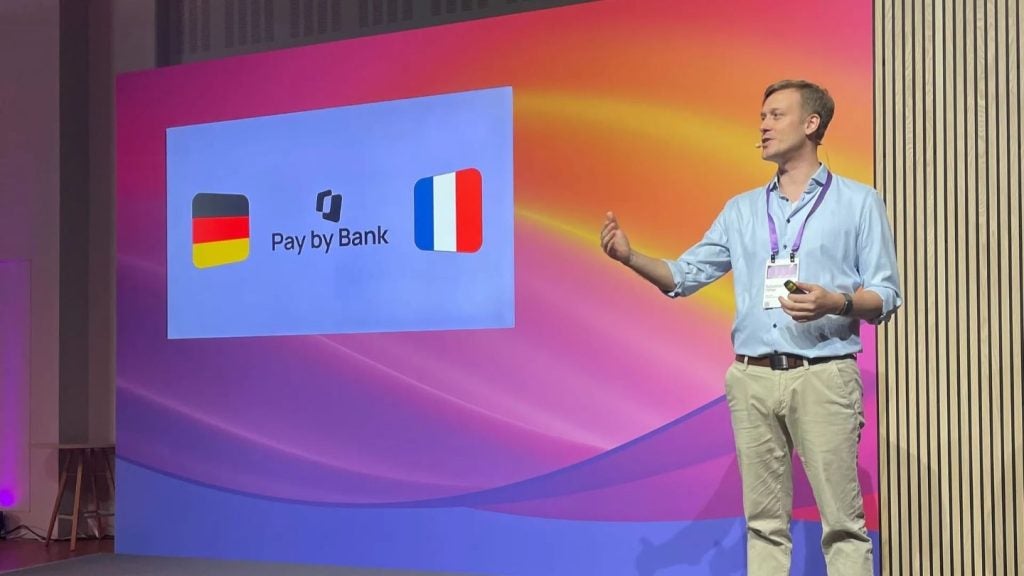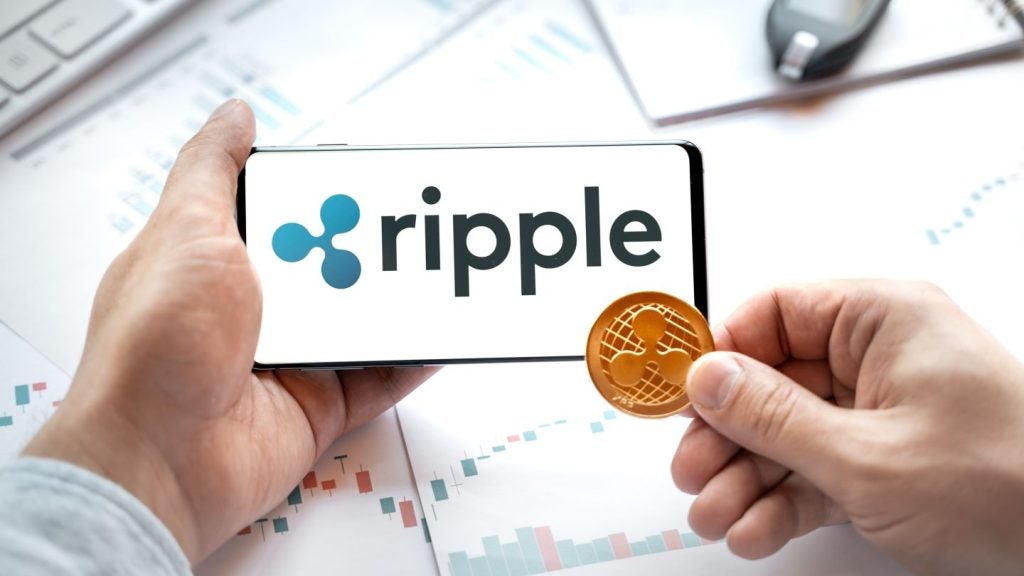The share of total payments made by cash and cheques is falling
in many markets around the globe. Cheque usage declined and cards
usage increased in all the major economies tracked by the Bank for
International Settlements (BIS) for the period 2001 to 2005 (see
figure 1). Cash payments have also been stagnating or declining in
several markets.
According to APACS, the payments association in the UK, cash
payments in the UK have declined by an estimated 16 percent since
their peak in 2000. In Germany, cash payments have declined from 75
percent of total payments transactions in 1996 to around 63 percent
today.
Cards are only one of several factors contributing to the decline
of cash and cheque payments. Electronic funds transfers and online
payment programmes such as PayPal have also been important forces
in reducing cheque usage.
“Cards payments, direct debits, standing orders and electronic
transfers have all been effective in taking market share away from
cash and cheques. Convenience plays a major role for the payer and
the significantly lower cost of collection and reconciliation is an
important factor for the payee,” said Francesco Burelli, principal
consultant at Capco, a financial research consultancy.
Cheque replacement

US Tariffs are shifting - will you react or anticipate?
Don’t let policy changes catch you off guard. Stay proactive with real-time data and expert analysis.
By GlobalDataAs a payment form, cheque usage varies widely from country to
country, and so does the corresponding potential for cheque
substitution by cards and other payments forms. According to BIS,
in nations such as Switzerland, Sweden, Belgium and Germany, cheque
transactions account for less than 1 percent of total transactions,
and in the Netherlands cheque transactions have been phased out
entirely. With such low levels of usage in these countries, the
potential for further erosion of market share is limited.
Other countries have much higher levels of cheque usage. Some 25
percent of all transactions in France are made using cheques and 37
percent of all transactions in the US are cheque-based, according
to the BIS.
A number of new products have recently been introduced to replace
various forms of cheques. Many traditional issuers of travellers’
cheques have switched from a paper cheque-based system to a prepaid
travel card. An example of such a programme is the Travel Cash
programme run by Swiss Bankers and launched in 2002 as a response
to declining sales volumes in the travellers’ cheques business. The
volume of funds loaded onto Travel Cash cards increased to $403
million in 2006, a 15-fold increase over the 2003 figure.
Unlike travellers’ cheques, travel cards can be reloaded and
reused, which is seen by the marketplace as a major advantage.
Customers can tap into the large global infrastructure of ATM
networks to withdraw funds rather than waiting in lines at banks
abroad. There are also several advantages for issuers.
New source of revenue
Travel cards provide a new source of fee revenue. For example,
Swiss Bankers charges a fee of either $3 or €3 ($3.58) for cash
withdrawals. Although the Travel Cash programme does not allow for
POS purchases, other travel card programmes do feature this
functionality. Travelex’s Cash Passport scheme allows for POS
purchases on its Visa-branded card, and charges a foreign exchange
margin for each purchase.
Other cheque payments that are being directly replaced by prepaid
cards include government benefits payments and employee payrolls.
Especially in the US, where cheque volumes are still high, a number
of different programmes have sprung up to replace cheques with
cards. The first state government benefits card was launched by US
Bank and Visa in 2002 to disburse child support payments in the
state of Colorado. Now, five years later, at least 30 states are
currently using or are in the process of implementing prepaid cards
to distribute child care, unemployment, disability, veterans’ pay
and other types of social benefits.
Visa reports that states participating in Visa programmes currently
disburse approximately $18 billion annually in
government-to-citizen transfers. Payroll cards are also replacing
pay cheques, especially among segments of the unbanked. Visa
estimates Americans pay roughly $1.5 billion per year in cheque
cashing fees, and payroll cards represent a way to eliminate those
expenses.
Cash replacement
Issuers are eager to replace cash with cards payments for several
reasons. It gives them an opportunity to gain new streams of
interchange revenue, develop ties with new types of merchants and
play a more important role in the way their customers make
payments. However, according to Burelli at Capco, “the major
advantage for banks in the displacement of cash derives from a
reduction in their cash handling costs”.
By reducing the number of cash payments, banks are able to replace
unprofitable customer-teller interactions and also reduce ATM
stocking and handling costs and risks.
Cash is most commonly used for low-value payments. In the UK and
continental Europe, it is estimated that roughly 80 percent of all
cash transactions are for volumes lower than €25. Therefore, recent
efforts to take market share from cash have focused on merchants
that routinely handle small transactions.
Part of this effort has involved expanding POS terminals into new
types of areas that previously had been the exclusive domain of
cash. Fast food restaurants, convenience stores, and even taxis are
beginning to accept credit cards in certain countries.
Another of the most successful areas for cash replacement by cards
has been in metropolitan transportation systems. Several cities
have turned towards card technology for their transportation
networks. For all stakeholders in transport systems, transitioning
from cash to cards presents several benefits. Using transport
cards, especially if they are contactless, is a much faster way for
customers to access transportation systems than using cash or
tokens. Customers can make bulk purchases for several journeys
rather than paying for each individual journey. A card-based system
allows for seamless transfers between buses, subways, trams and
ferries.
In the case of Oyster, the London public transport ticketing
scheme, the response from the market has been phenomenal. In
January 2007, the 10 millionth Oyster card was issued after only
three years of operation. According to London mayor Ken
Livingstone, cash payments on London’s Underground and buses have
fallen to just 5 percent of total transactions.

Debit cards
Over the last decade, debit card usage has risen in all developed
markets, especially in the US. Debit is the fastest-growing retail
payment method in the US, posting double-digit average annual
growth of 21 percent from 2002 to 2006. Increasingly, debit cards
are being used to make low-value payments, due to expanding POS
infrastructures and increased merchant acceptance, which in turn
has led to displacement of cash and cheques. In the US, both online
PIN and offline signature debit payments are gaining popularity
with consumers, and according to the Federal Reserve Bank of
Kansas, both methods grew by 25 percent and 19 percent,
respectively, during the period 2002 to 2006.
A study by US research consultancy Dove Consulting shows that the
debit share of US consumer transactions at the POS is now close to
33 percent, up from 21 percent in 1999. In terms of merchant
acceptance of debit, signature debit dominates due to debit
payments being processed on the Visa and MasterCard networks, and
the ‘honour all cards’ rule, which requires merchants that accept
Visa or MasterCard credit cards to accept debit cards. The
convenience and department store retail sectors have the fastest
growth of PIN debit acceptance.
Loyalty schemes have also played a part in boosting debit’s
popularity. Dove Consulting reported in its study that 13 percent
of respondents received rewards on either PIN, signature or both
types of debit programmes in 2005, up from 8 percent in 2003. Dove
reported that 36 percent of issuers offer rewards programmes and an
additional 23 percent are actively considering offering one. Of the
issuers with rewards programmes, 71 percent offer rewards on only
signature debit and 29 percent offer rewards for both PIN and
signature debit. The availability of debit rewards schemes has
further eroded consumer preference for using cash and
cheques.
Capturing small ticket payments
In a bid to capitalise on the growth of card-based low-value
payments, in May 2006 Visa USA unveiled a new strategy to capture
an increasing share of the small ticket payment market. The goal
was to increase the reach of the No Signature Required programme,
in which cash-heavy businesses can now accept Visa for purchases
without obtaining a cardholder signature. It also aimed to expand
the merchant reach of the small ticket Payment Service to
accelerate card acceptance and usage at traditionally cash-heavy
merchants by increasing cardholder convenience and providing
economic incentives to acquirers.
The association officially eliminated its cardholder signature
requirement for small ticket transactions in 17 merchant
categories, including parking lots, laundries, video and DVD rental
stores, taxis, limousines and fast food restaurants. Interchange
rates also have been designed to appeal to merchants accepting
smaller-value transactions. Visa introduced an interchange rate of
1.55 percent plus $0.04 for its Visa cheque card and 1.65 percent
plus $0.04 for its credit card.
Visa’s small ticket strategy also expands the Small Ticket Payment
Service to offer acquirers lower credit and debit interchange rates
on consumer card transactions of $15 or less in seven new merchant
categories. Now, a total of 14 categories can benefit from the
reduced rates for transactions below this threshold, including a
further reduction on debit interchange.
Micropayments
Micropayments are electronic payments for purchases with a value of
less than $5. In November 2006, a survey from US micropayments
specialist Peppercoin found that more than 67 million US consumers
had used a credit or debit card for a purchase of less than $5 in
the past 30 days, which Peppercoin said proves that consumers are
willing and ready to use credit and debit cards for small
payments.
The survey found that consumers are most likely to use credit or
debit cards for small payments purchases at convenience stores and
quick service restaurants, in order to buy coffee or pay for
transport or tolls. Also, 63 million US consumers would use credit
or debit cards to make purchases for transportation services
(subways and tolls) if they could, but only 25 million have done so
to date.
The vending market reported similar numbers: more than 42 million
were willing to use credit or debit cards to make purchases from
food or drink vending machines.
According to Peppercoin, this represents a significant revenue
growth opportunity for transit and vending operators and card
companies, because consumers typically spend more when using
card-based payment mechanisms.
“The data shows that credit and debit cards are becoming a
preferred payment method for a variety of small payments purchases
in the physical world,” said Matt Kleinschmit, vice-president with
global survey-based market research group Ipsos Insight, which
carried out the survey.
“This suggests that merchants, retailers and card issuers alike
could all benefit from increased consumer access to credit and
debit cards as a small payment option.”
Having proven themselves in several online markets such as music
downloads and internet purchases, micropayments are poised to make
inroads at the physical point of sale, according to a study by
James McGrath of the Payment Cards Center at the Federal Reserve
Bank of Philadelphia.
The study, entitled Micropayments: The Final Frontier for
Electronic Consumer Payments, found that industry structure, the
co-ordination of standards, and customer preferences and
experiences have all influenced the development of micropayments
products around the world. In the US, micropayments are worth an
estimated $160 billion annually, according to the study, which
found that the potential market could be as large as $1
trillion.
The study, which focused on such remote transactions as vending and
pay telephone services, found that technologies perfected in the
online channel may very well be ready for their debut in the
physical retail world.
For POS micropayments, cost has traditionally been the main
deterrent to widespread adoption. The use of payment cards has been
discouraged for small-value transactions because of the flat fee
component of interchange and because of the time required to wait
for a sales slip, sign it and verify identification.
However, McGrath says that there has been real change in the
treatment of small-value transactions among associations and
issuers, as technologies that have proven successful online make
their way into the broader world of POS payments. New devices
designed to facilitate contactless payments will have a major
impact on the acceptance of micropayments, as the growing
contactless trend is directed towards mostly small-value
transactions.
Contactless cards
 Contactless cards are the latest initiative to
Contactless cards are the latest initiative to
displace cash and cheques in low-value purchase locations, such as
quick service restaurants, convenience stores, petrol stations and
transport ticketing locations.
Typically, transactions below a set amount, such as $25, do not
require a signature or PIN, significantly cutting down on
transaction times. Already widespread in the US and Asia-Pacific
regions, contactless cards appear to have captured the public’s
imagination.
A survey commissioned in October 2006 by global smart card industry
body Smart Card Alliance found that contactless payment is
increasingly popular with US consumers. The survey, undertaken by
Javelin Strategy & Research, found that 13 percent of consumers
surveyed have already used contactless payment, and 95 percent of
that group said it was both easy and fast. Those consumers who have
tried it were confident in the new payment technology: 84 percent
said it was as safe or safer than credit cards, and that they would
use it for large purchases. Of consumers who have yet to try
contactless, 75 percent are somewhat likely or very likely to adopt
it.
Yet 62 percent of all respondents rated themselves as not familiar
with the technology, demonstrating the industry has a big marketing
opportunity in front of it, according to Javelin.
According to Visa, US consumer purchases of less than $15 represent
more than $1 trillion in annual spending, but currently US
consumers use payment cards for less than 1 percent of that amount.
Both Visa and MasterCard are aggressively pushing contactless
payment as an alternative to cash in order to tap into this vast
market.
MasterCard’s PayPass contactless platform has enjoyed rapid
deployment across the world. Some 10 million MasterCard PayPass
cards had been issued worldwide by the end of June 2006 and some
32,000 merchants were accepting PayPass.
Challenges
Although card use has grown significantly at the expense of cash
and cheques, challenges still remain. A major barrier to the
expansion of cards in the area of cash payments is resistance from
merchants.
According to Volker Schloenvoigt, a director at research
consultancy Edgar Dunn, merchants often feel they have nothing to
gain from switching payments from cash to cards.
He said: “Merchants often ignore the internal costs of cash
transactions such as handling cash, stocking registers and
transporting cash to and from the bank. However, merchants have a
clear understanding of card-related interchange fees and merchant
service commissions.”
As long as there is resistance from merchants, the ability of cards
to penetrate areas dominated by cash and cheques is limited. “The
merchant has a huge influence on what kinds of payment instruments
he will accept,” says Schloenvoigt.
It also remains to be seen how effective cards will be in taking
market share away from cheques at the high end of the payments
spectrum. In most major economies, the average cheque transaction
is ten to 80 times larger than the average card transaction (see
figure 2). Consumers may not feel comfortable making such large
payments with cards, or may find it more convenient to use direct
debit services to make these transactions.







